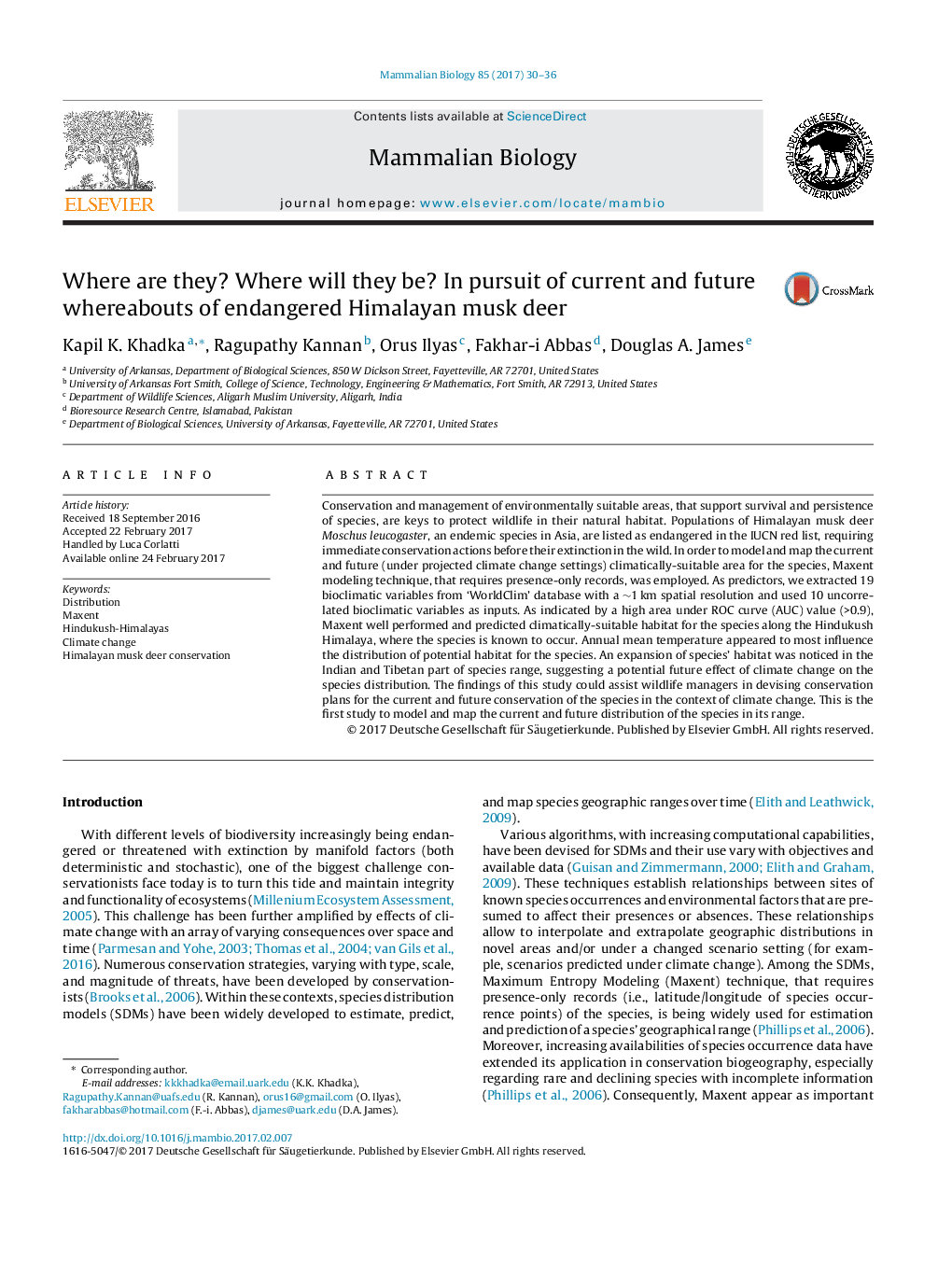| Article ID | Journal | Published Year | Pages | File Type |
|---|---|---|---|---|
| 5533740 | Mammalian Biology - Zeitschrift für Säugetierkunde | 2017 | 7 Pages |
Conservation and management of environmentally suitable areas, that support survival and persistence of species, are keys to protect wildlife in their natural habitat. Populations of Himalayan musk deer Moschus leucogaster, an endemic species in Asia, are listed as endangered in the IUCN red list, requiring immediate conservation actions before their extinction in the wild. In order to model and map the current and future (under projected climate change settings) climatically-suitable area for the species, Maxent modeling technique, that requires presence-only records, was employed. As predictors, we extracted 19 bioclimatic variables from 'WorldClim' database with a â¼1Â km spatial resolution and used 10 uncorrelated bioclimatic variables as inputs. As indicated by a high area under ROC curve (AUC) value (>0.9), Maxent well performed and predicted climatically-suitable habitat for the species along the Hindukush Himalaya, where the species is known to occur. Annual mean temperature appeared to most influence the distribution of potential habitat for the species. An expansion of species' habitat was noticed in the Indian and Tibetan part of species range, suggesting a potential future effect of climate change on the species distribution. The findings of this study could assist wildlife managers in devising conservation plans for the current and future conservation of the species in the context of climate change. This is the first study to model and map the current and future distribution of the species in its range.
